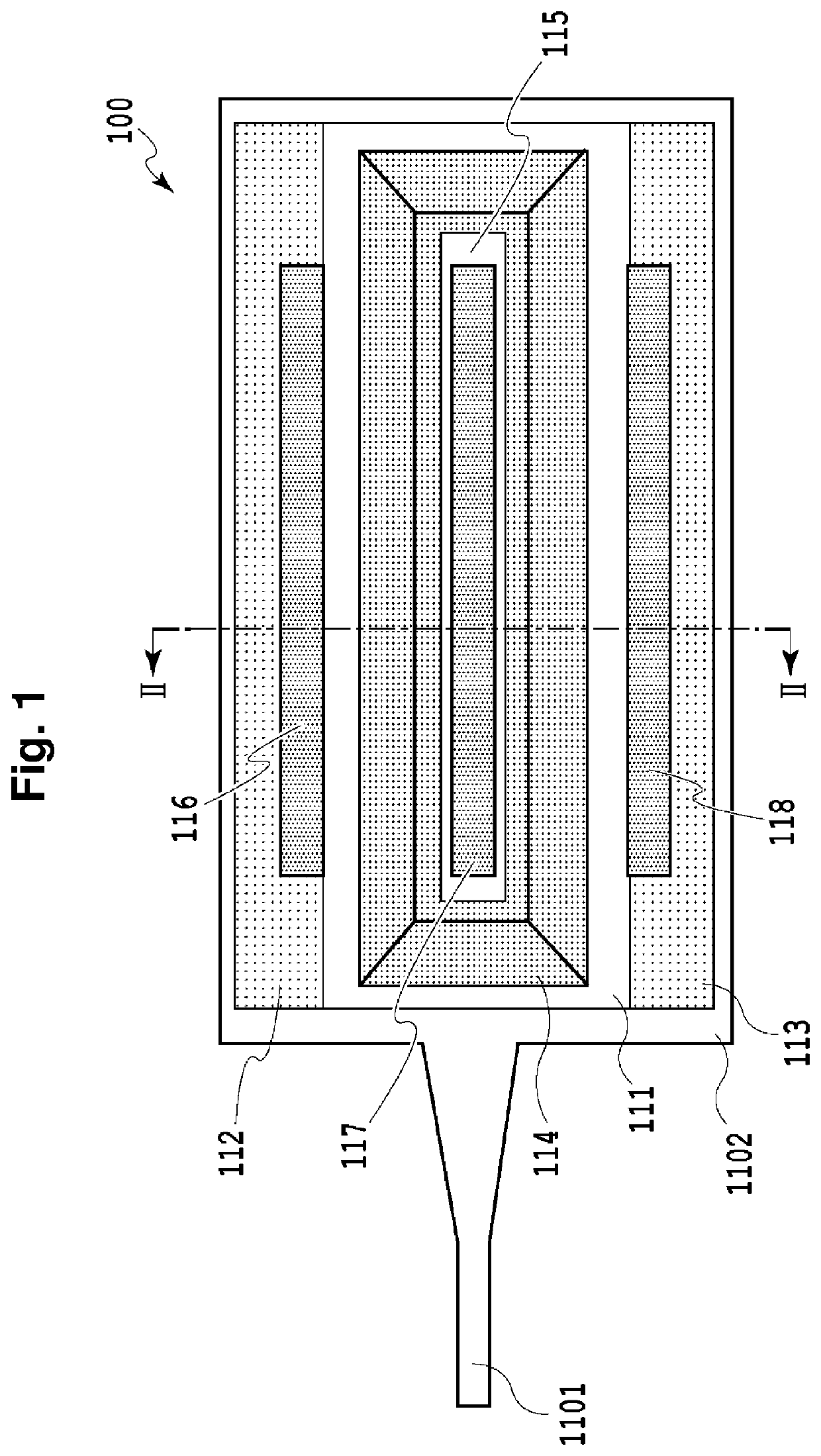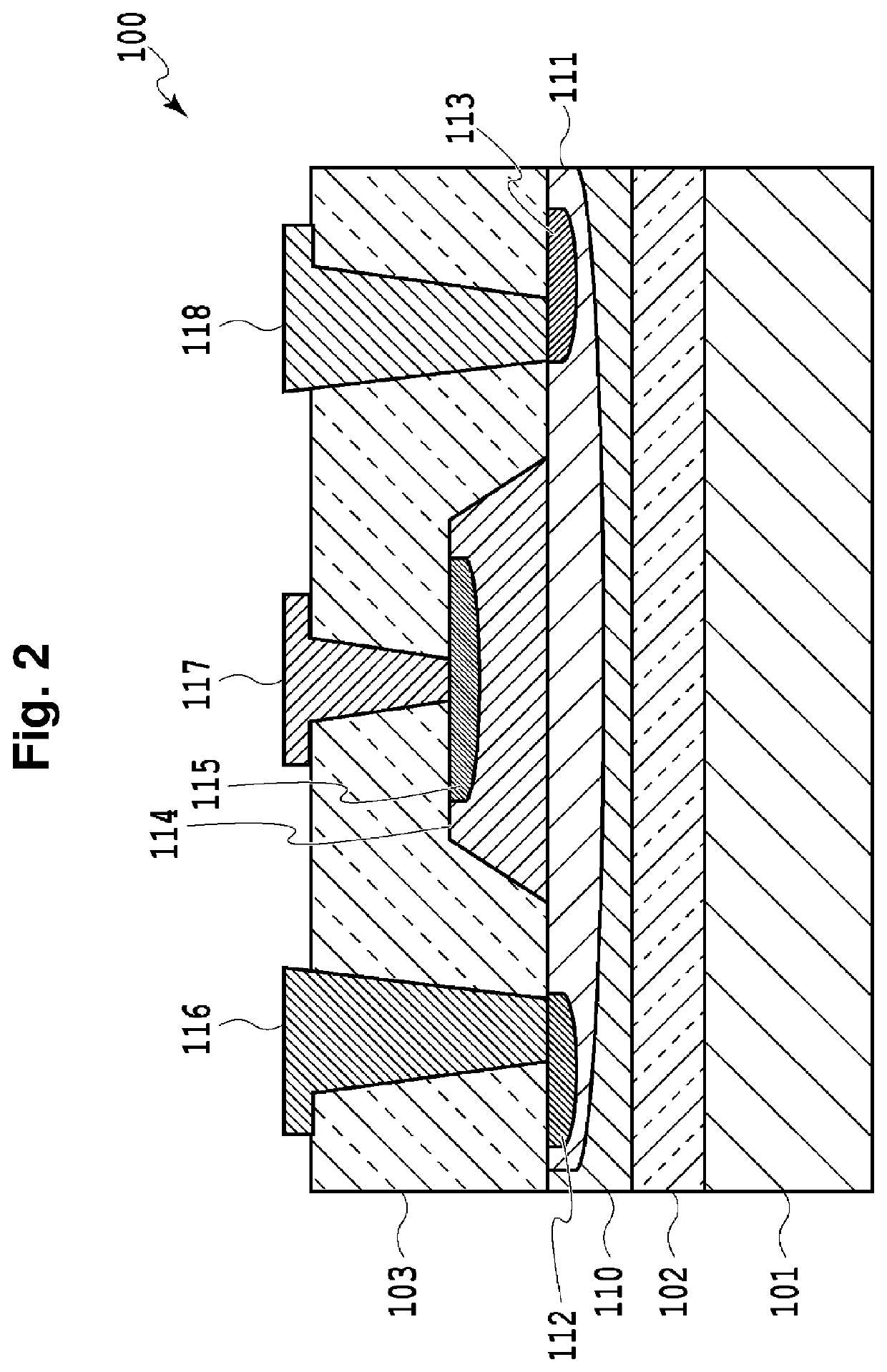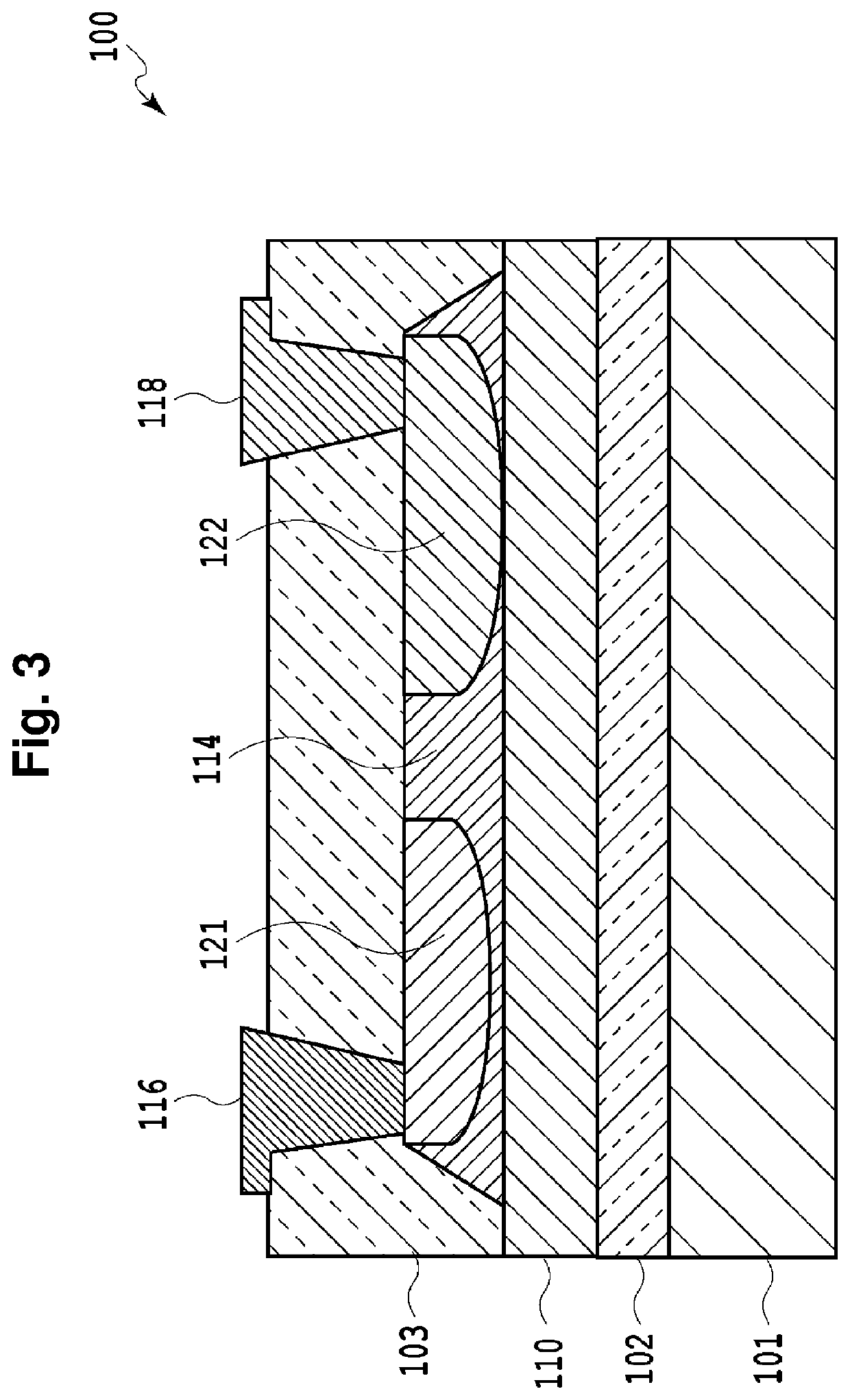Photodetector
a technology of photodetector and resonator, which is applied in the direction of optical radiation measurement, radiation control devices, instruments, etc., can solve the problems of increasing production costs, and achieve the effect of curb deterioration in a common-mode rejection ratio
- Summary
- Abstract
- Description
- Claims
- Application Information
AI Technical Summary
Benefits of technology
Problems solved by technology
Method used
Image
Examples
embodiment 1
[0037]FIGS. 9 and 10 are a top view and a sectional view, respectively, showing a configuration of a first embodiment of the photodetector according to the present invention. In this example, ammeters connected to the cathodes of the Ge PDs 1001 and 1002 serve as monitors while the heaters 200 and 201 containing a metal or metal compound are placed as resistors. As shown in FIG. 9, a photodetector according to the present invention includes two or more photodiodes (Ge PDs) 1001 and 1002 placed to receive an input differential signal; ammeters 204 and 205 serving as current monitors adapted to measure photocurrents of the two or more photodiodes; heaters 200 and 201, which are resistors adapted to heat the photodiodes; and voltage sources 202 and 203 connected to the respective resistors to control the resistors and capable of controlling voltage values independently of each other. Here, the voltage source 202 is connected with the ammeter 204 serving as a current monitor, the volta...
embodiment 2
[0038]FIG. 11 is a diagram showing a configuration of a second embodiment of the photodetector according to the present invention. In this example, ammeters connected to the cathodes of the Ge PDs 1001 and 1002 serve as monitors while heaters 210 and 211 created by implantation (ion implantation) in the core layers 110 of the Ge PDs 1001 and 1002 are placed as resistors. The Ge PDs 1001 and 1002 are placed as a PD pair to receive a differential signal. The ammeters 204 and 205 are attached to the cathodes of the respective Ge PDs, and voltage sources 206 and 207 are connected to the ammeters 204 and 205, respectively. The ammeters 204 and 205 are connected, respectively, with the voltage sources 202 and 203 for the respective heaters 200 and 201. The voltage sources 202 and 203 adjust the voltages applied to the heaters, such that the currents indicated by the ammeters 204 and 205 will be equal to each other.
embodiment 3
[0039]FIG. 12 is a diagram showing a configuration of a third embodiment of the photodetector according to the present invention. In this example, a transimpedance amplifier 220 connected to the anodes of the Ge PDs 1001 and 1002 serve as a monitor while the heaters 200 and 201 containing a metal or metal compound are placed as resistors. The Ge PDs 1001 and 1002 are placed as a PD pair to receive a differential signal. The transimpedance amplifier 220 amplifies Ge PD signals and produces voltage output while monitoring currents from the Ge PDs. The transimpedance amplifier 220 feeds values of the currents back to the voltage sources 202 and 203, which then control the heaters such that currents entering the transimpedance amplifier 220 from the Ge PDs will be equal to each other. Whereas the heaters made of a metal or metal compound are used as resistors in FIG. 12, heaters created by implantation (ion implantation) in the core layers 110 of the Ge PDs 1001 and 1002 may be used as...
PUM
| Property | Measurement | Unit |
|---|---|---|
| wavelength ranges | aaaaa | aaaaa |
| wavelength ranges | aaaaa | aaaaa |
| photocurrents | aaaaa | aaaaa |
Abstract
Description
Claims
Application Information
 Login to View More
Login to View More - R&D
- Intellectual Property
- Life Sciences
- Materials
- Tech Scout
- Unparalleled Data Quality
- Higher Quality Content
- 60% Fewer Hallucinations
Browse by: Latest US Patents, China's latest patents, Technical Efficacy Thesaurus, Application Domain, Technology Topic, Popular Technical Reports.
© 2025 PatSnap. All rights reserved.Legal|Privacy policy|Modern Slavery Act Transparency Statement|Sitemap|About US| Contact US: help@patsnap.com



